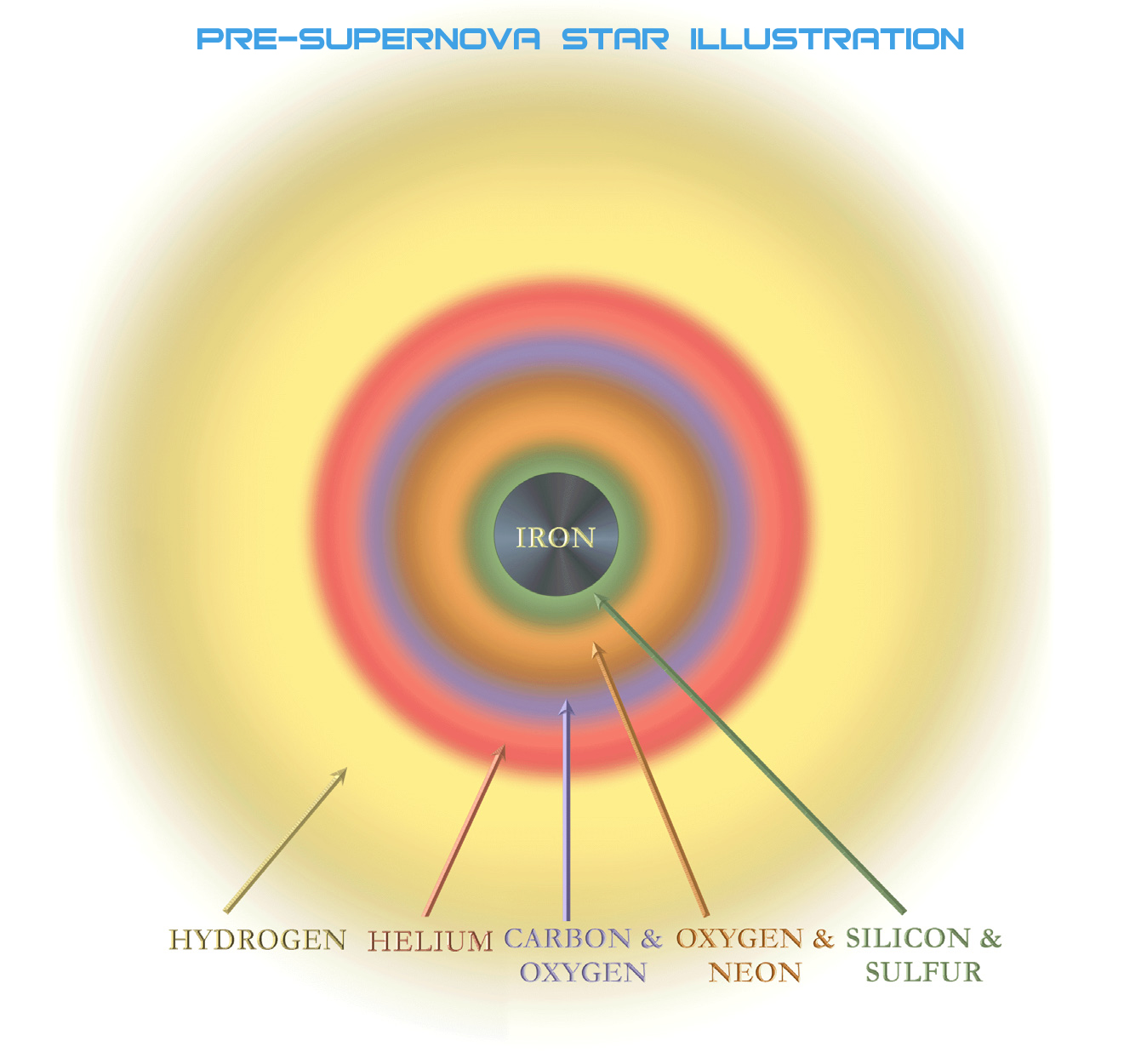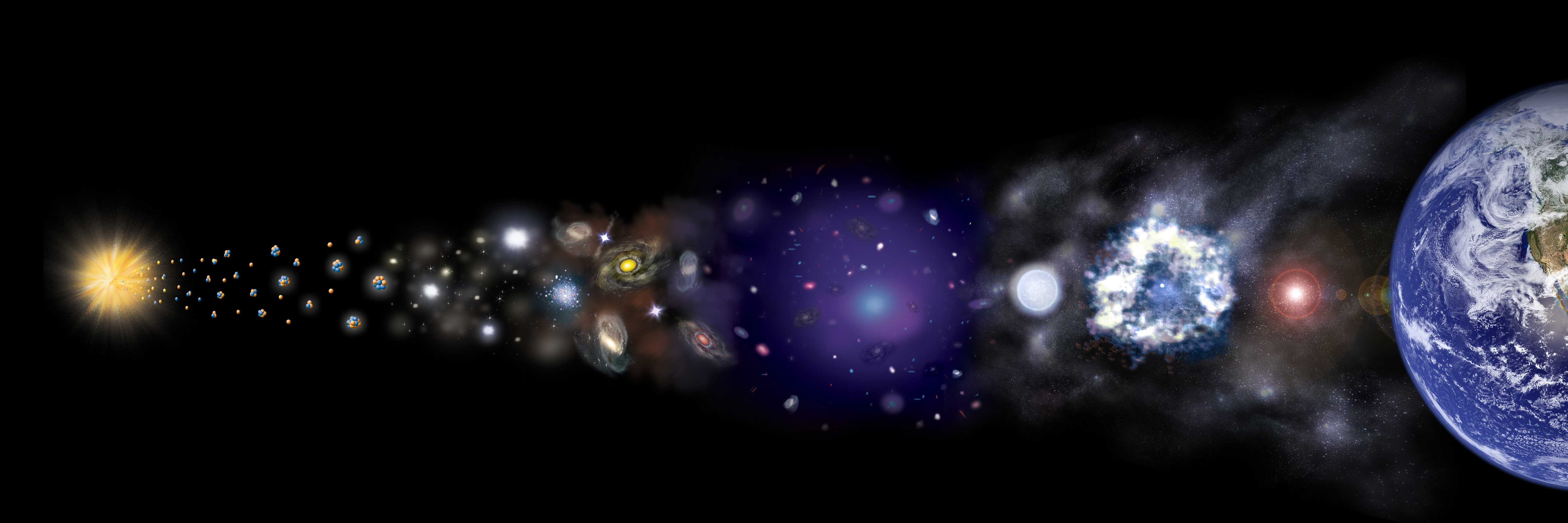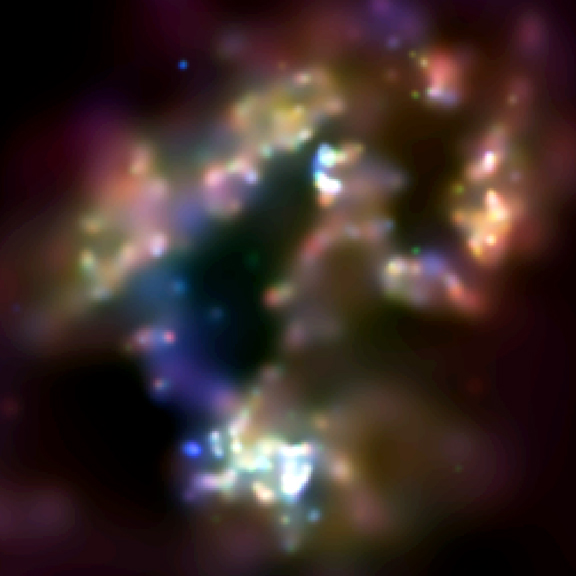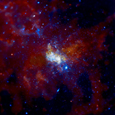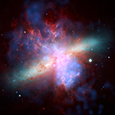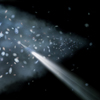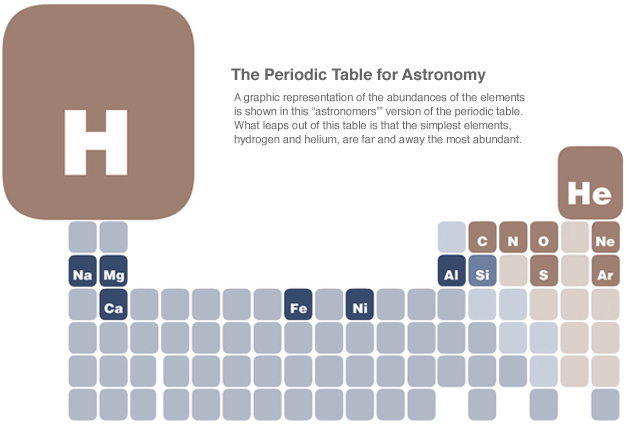Chemistry, the study of the intricate dances and bondings of low-energy electrons to form the molecules that make up the world we live in, may seem far removed from the thermonuclear heat in the interiors of stars and the awesome power of supernovas. Yet, there is a fundamental connection between them.
To illustrate this connection, the familiar periodic table of elements—found in virtually every chemistry class—has been adapted to show how astronomers see the chemical Universe. What leaps out of this table is that the simplest elements, hydrogen and helium, are far and away the most abundant.
The Universe started out with baryonic matter in its simplest form, hydrogen. In just the first 20 minutes or so after the Big Bang, about 25% of the hydrogen was converted to helium. In essence, the chemical history of the Universe can be divided into two mainphases: one lasting 20 minutes, and the rest lasting for 13.7 billion years and counting.
After that initial one third of an hour, the expanding Universe cooled below the point where nuclear fusion could operate. This meant that no evolution of matter could occur again until stars were formed a few million years later. Then the buildup of elements heavier than helium could begin.
Stars evolve through a sequence of stages in which nuclear fusion reactions in their central regions build up helium and other elements (see illustration, far right).The energy supplied by fusion reactions creates the pressure needed to hold the star up against gravity. Winds of gas escaping from stars distribute some of this processed matter into space in a relatively gentle manner and supernovas do it violently.
Illustration: NASA/CXC/M.Weiss
As the enrichment of the interstellar and intergalactic gas has proceeded over vast stretches of space and time, the chemistry of the cosmos has become richer, too. Subsequent generations of stars have formed from interstellar gas enriched in heavy elements. Our Sun, Solar System, and indeed the existence of life on Earth are direct results of this long chain of stellar birth, death, and rebirth. In this way, the evolution of matter, stars and galaxies are all inextricably tied together and so too are astronomy and chemistry.
One of the principal scientific accomplishments of the Chandra X-ray Observatory has been to help unravel how the chemical enrichment by stellar winds and supernovas works on a galactic and intergalactic scale.
Chandra Images
Chandra images and spectra of individual supernova remnants reveal clouds of gas rich in elements such as oxygen, silicon, sulfur, calcium and iron, and track the speed at which these elements have been ejected in the explosion. The Chandra image of the Cas A supernova remnant shows iron rich ejecta outside silicon-rich ejecta, thus indicating that turbulent mixing and an aspherical explosion turned much of the original star inside out. Observations of Doppler-shifted emission lines for Cas A and other supernova remnants are providing three-dimensional information on the distribution and velocity of the supernova ejecta which will help to constrain models for the explosion.
On a larger scale, observations of galaxies undergoing bursts of star formation show that vast regions of these galaxies have been enriched by the combined action of thousands of supernovas. The Antennae galaxy system was produced by the collision of two galaxies. This collision created bursts of star formation and, few million years later, thousands of supernovas which heated and enriched clouds of gas thousands of light years in extent.
An unexpected agent for distributing heavy elements throughout a galaxy is a supermassive black hole in the center of a galaxy (for example, Sagittarius A*). Gas spiraling toward black holes can that become overheated and produce a wind of gas that flows away from the black hole, or it can create an intense electromagnetic field that drives enriched material into the outer reaches of the galaxy and beyond.
On a still larger scale, oxygen has been detected in intergalactic filaments millions of light years in length. This oxygen was likely produced more than ten billion years ago, in some of the first supernovas to occur in the history of the Universe. If the rate of supernovas gets so high that the combined effects of many supernova shock waves drives a galactic-scale wind that blows the gas out of the galaxy. A prime example is the galaxy M82.
Galactic winds such as the one in M82 are rare today, but they were common billions of years ago when galaxies were very young and stars were forming rapidly because of frequent collisions between galaxies. Chandra showed that the Sculptor Wall, a collection of gas and galaxies that stretches across tens of millions of light years, contains a vast reservoir of gas enriched in oxygen from galactic winds. The Sculptor Wall is thought to be part of an enormous web of hot, diffuse gas containing as much as half of all the ordinary matter in the Universe.
Periodic Table
In this version of the periodic table, the average relative abundance by mass of the various elements in the Universe is indicated by the number in the square, which gives the abundance in parts per 10,000. The sum of the abundances of all the elements without numbers is less than one part per 10,000. The abundances give important clues to the nuclear reactions and cosmic settings required to produce the various elements.
For More Information:
- Elemental Change
- Chandra, Cosmos and Chemistry


